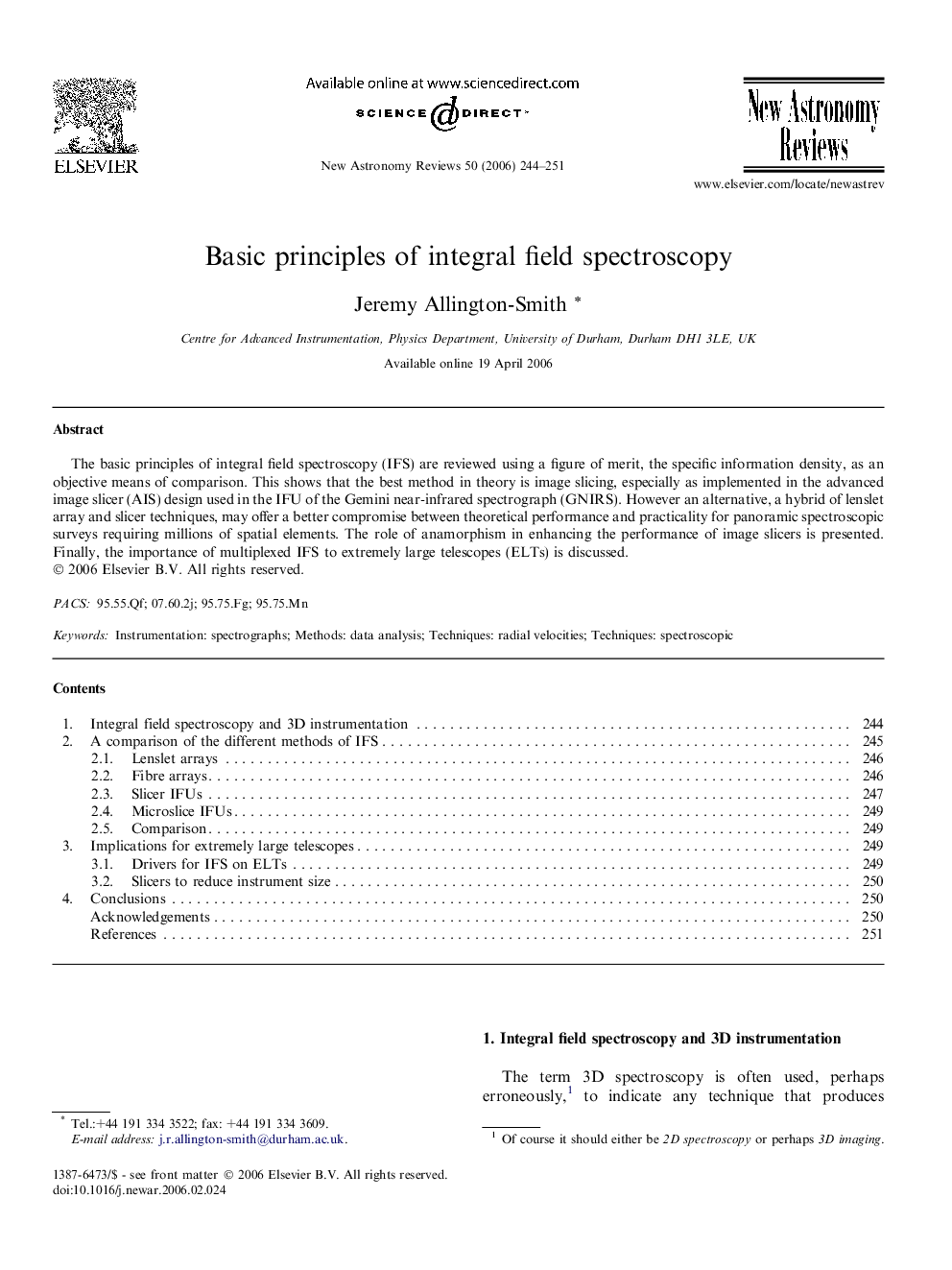| Article ID | Journal | Published Year | Pages | File Type |
|---|---|---|---|---|
| 1780351 | New Astronomy Reviews | 2006 | 8 Pages |
The basic principles of integral field spectroscopy (IFS) are reviewed using a figure of merit, the specific information density, as an objective means of comparison. This shows that the best method in theory is image slicing, especially as implemented in the advanced image slicer (AIS) design used in the IFU of the Gemini near-infrared spectrograph (GNIRS). However an alternative, a hybrid of lenslet array and slicer techniques, may offer a better compromise between theoretical performance and practicality for panoramic spectroscopic surveys requiring millions of spatial elements. The role of anamorphism in enhancing the performance of image slicers is presented. Finally, the importance of multiplexed IFS to extremely large telescopes (ELTs) is discussed.
